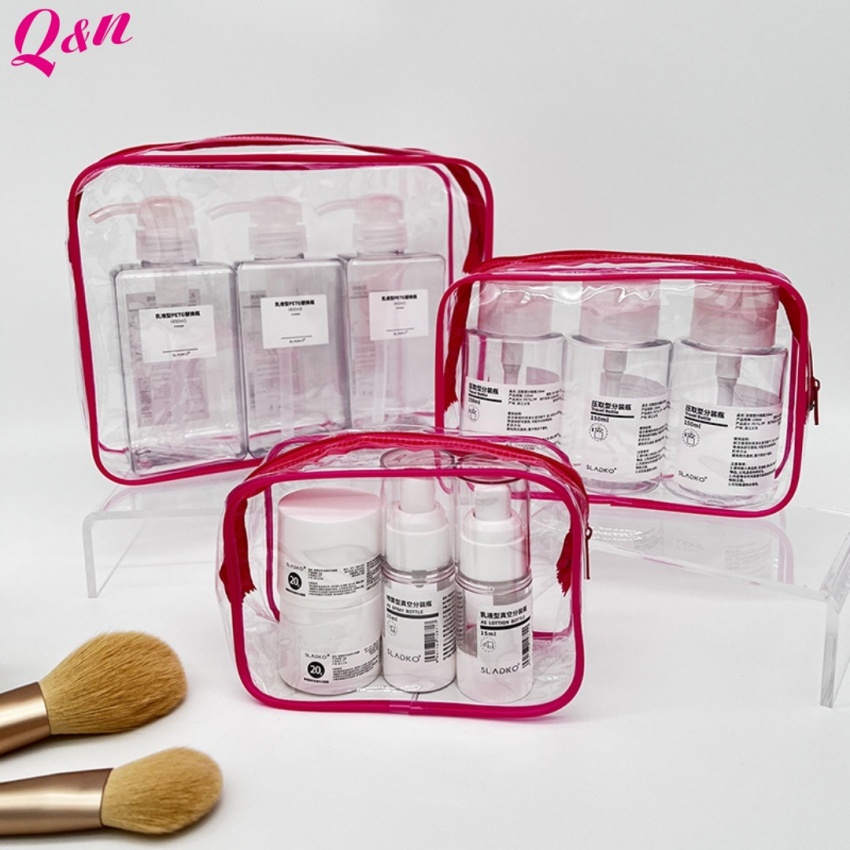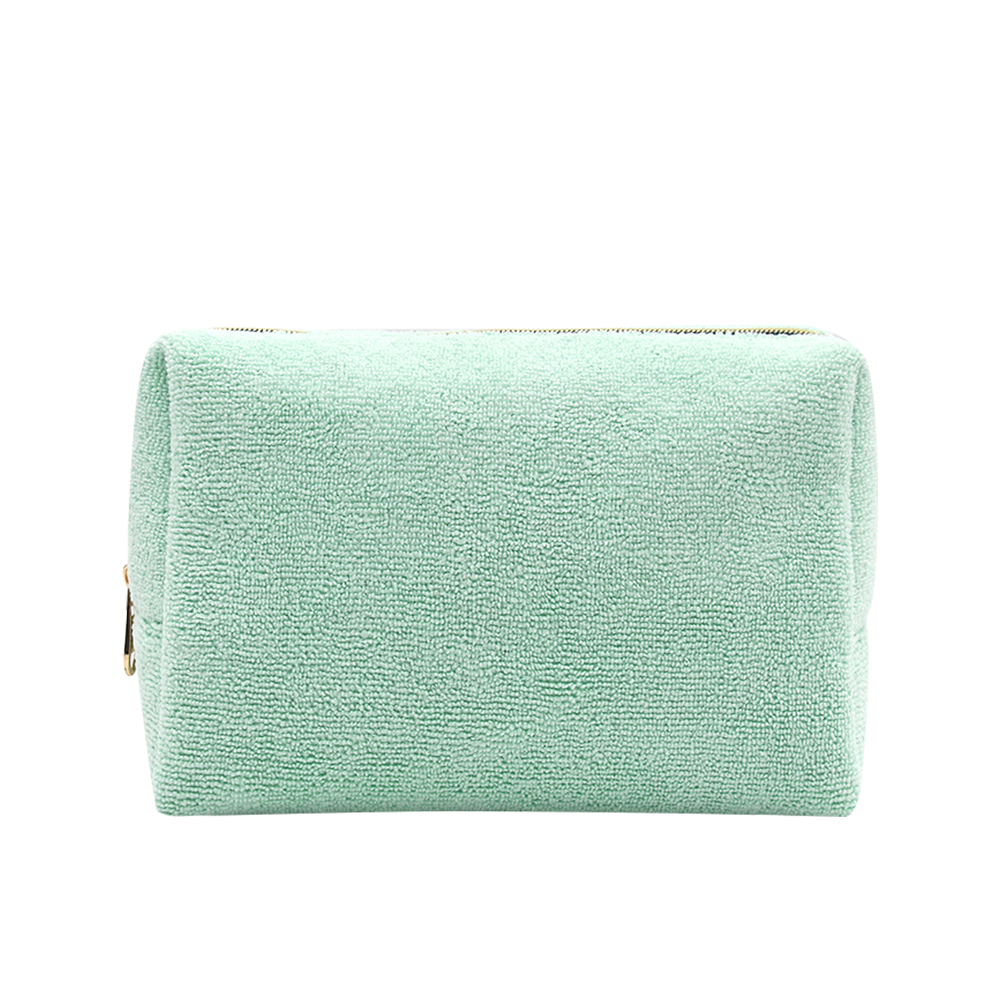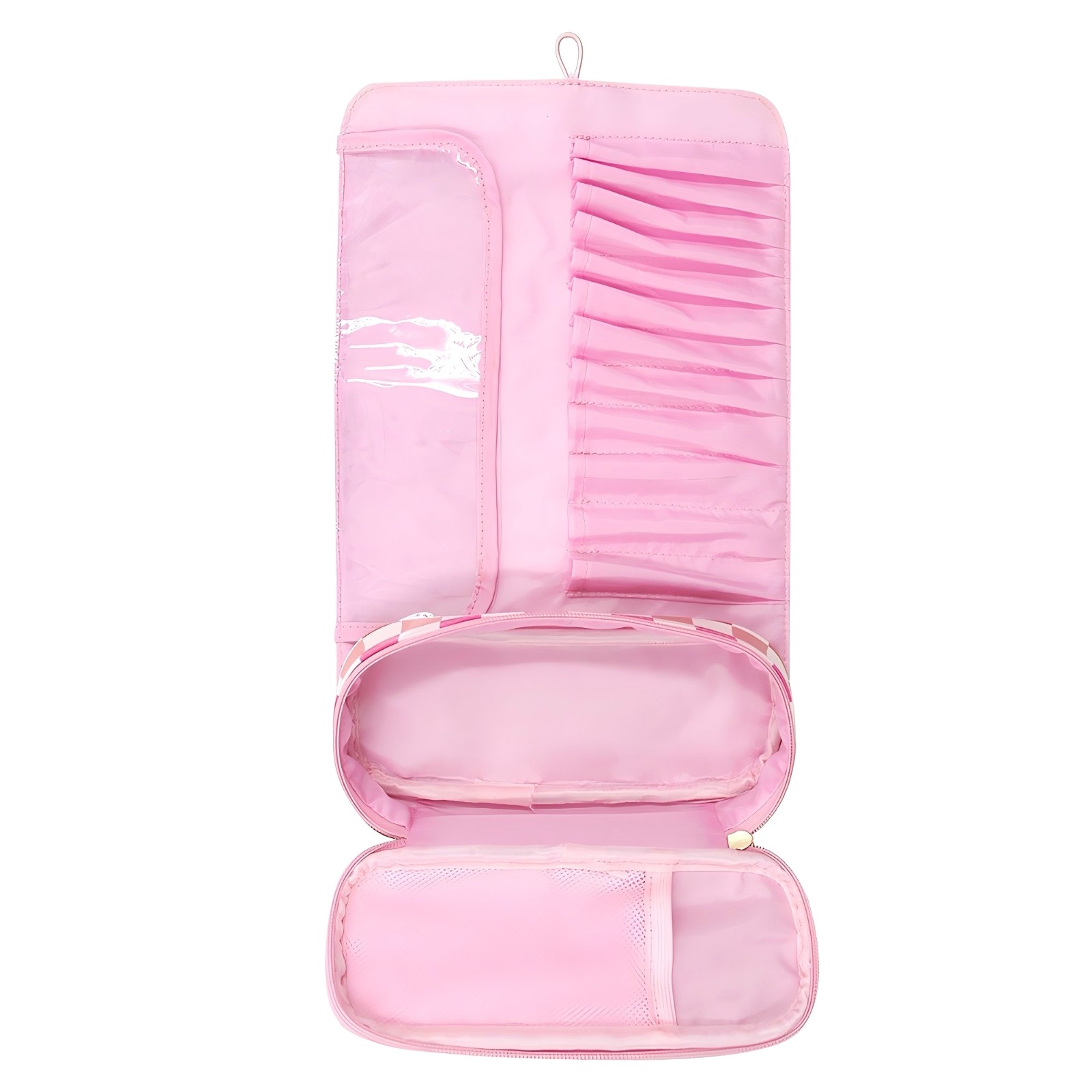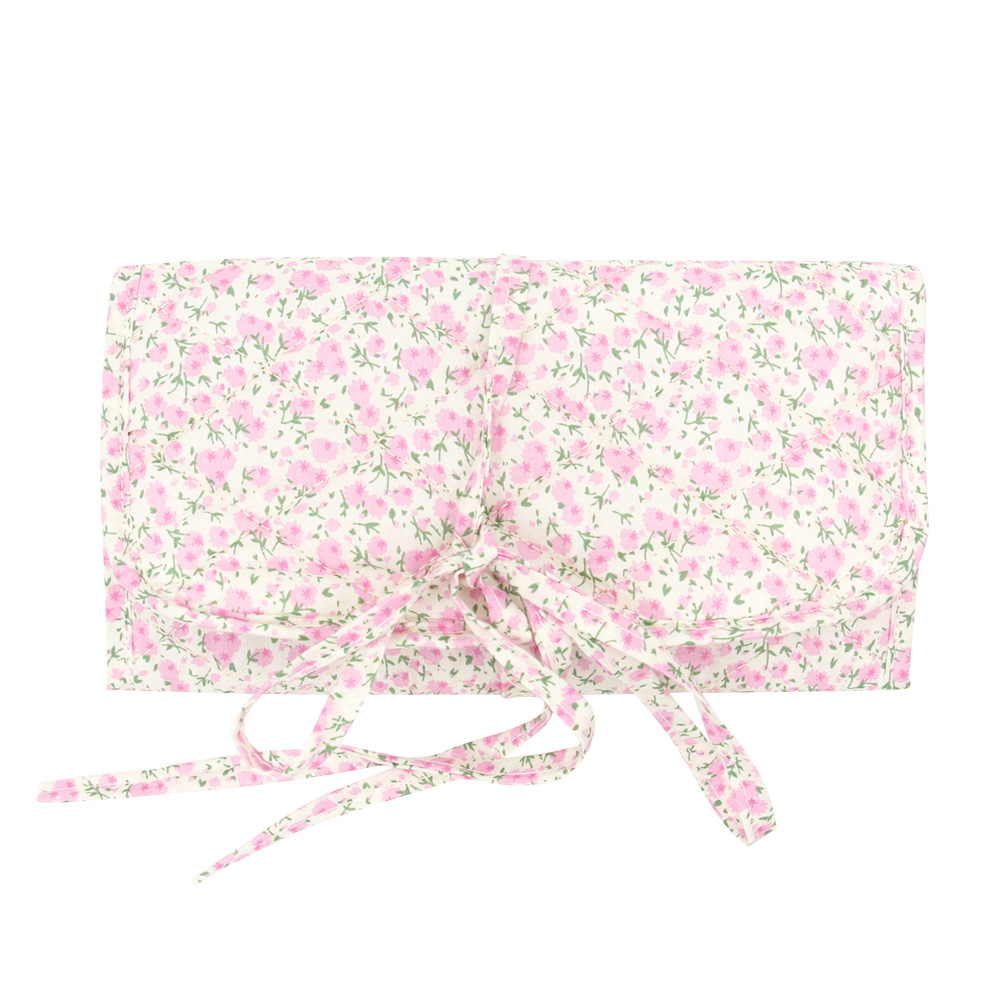Post Code:511400
Email:sales@blaccessory.com
whatsApp:+86 18028696007
Toiletry bags and cosmetic bags serve different personal care functions through specialized design features, storage requirements, and usage patterns creating distinct product categories. Confusion between these products leads to inappropriate selection, inadequate functionality, and frustration with storage capacity affecting daily routines and travel experiences.
Toiletry bags emphasize comprehensive personal care storage with larger capacity for hygiene items, while cosmetic bags focus on makeup organization with specialized compartments, both enjoying equal popularity with toiletry bags offering superior storage capacity for comprehensive personal care needs.

Through our Q&N manufacturing experience producing both toiletry and cosmetic bags for global markets, I observe how these products serve complementary yet distinct functions in personal care routines. Both categories enjoy tremendous popularity among consumers, though toiletry bags generally provide superior storage capacity for comprehensive personal care organization addressing broader functional requirements beyond makeup application.
Essential toiletries vary based on personal preferences, travel duration, destination facilities, and individual hygiene requirements affecting packing decisions and bag selection for optimal convenience and functionality. Overpacking toiletries creates unnecessary weight and space consumption while underpacking compromises personal care routines and comfort during travel or daily use.
Essential toiletries include toothbrush, toothpaste, soap or body wash, shampoo, deodorant, and razor for basic hygiene, with cosmetic bags and toiletry bags enjoying equal popularity while toiletry bags provide superior storage capacity for comprehensive personal care collections.

Basic hygiene essentials form the foundation of any toiletry collection providing fundamental cleanliness and personal care maintenance across various situations and environments. Toothbrush and toothpaste maintain oral hygiene preventing dental issues and ensuring fresh breath during social interactions. Electric toothbrushes require charging considerations for travel applications. Travel-sized toothpaste meets airline restrictions while providing adequate supply for extended trips.
Body cleansing products including soap, body wash, or shower gel maintain skin cleanliness and health through regular bathing routines. Bar soap provides compact, leak-proof option with minimal packaging requirements. Liquid body wash offers luxury experience with various fragrance and moisturizing options. Multipurpose cleansing products reduce packing requirements through combined functionality.
Our Q&N manufacturing experience demonstrates how superior storage capacity in toiletry bags accommodates comprehensive personal care collections while cosmetic bags focus on specialized makeup organization, both categories achieving equal popularity among consumers with distinct functional advantages.
Hair care products maintain scalp health and appearance through regular cleansing and conditioning routines requiring size and formula considerations for different applications. Shampoo removes dirt, oil, and styling product buildup maintaining healthy scalp conditions. Conditioner provides moisture and manageability for various hair types and lengths. Dry shampoo offers refresh option for extended wear and limited washing opportunities.
Specialized hair care addresses specific needs including color protection, damage repair, and styling requirements affecting product selection and quantity needs. Leave-in treatments provide ongoing care and protection throughout the day. Styling products maintain desired appearance and hold for various occasions. Heat protection products prevent damage from styling tools and environmental factors.
Deodorant and antiperspirant maintain freshness and confidence through odor prevention and moisture control during daily activities and stressful situations. Stick deodorants provide reliable protection with minimal application mess. Roll-on options offer smooth application with even coverage. Natural alternatives appeal to consumers avoiding aluminum and synthetic ingredients.
Shaving essentials maintain grooming standards through effective hair removal and skin protection preventing irritation and achieving smooth results. Razors require blade quality and safety considerations for different skin sensitivities. Shaving cream or gel provides lubrication and protection during shaving process. Aftershave products soothe skin and prevent irritation following shaving.
Skincare basics maintain skin health and appearance through cleansing, moisturizing, and protection addressing various skin types and environmental challenges. Facial cleanser removes makeup, dirt, and pollutants without over-drying delicate facial skin. Moisturizer provides hydration and barrier protection maintaining skin elasticity and comfort. Sunscreen prevents UV damage and premature aging for daily protection.
Personal preferences influence toiletry selection based on skin type, lifestyle requirements, and individual comfort standards affecting product choices and quantities needed. Sensitive skin requires gentle, fragrance-free formulations avoiding irritation and allergic reactions. Active lifestyles need enhanced protection and quick-refresh options for post-exercise care. Professional requirements may include specific grooming standards and appearance maintenance needs.
Travel considerations affect toiletry selection through size restrictions, climate adaptations, and duration requirements influencing product choices and packaging strategies. Airline liquid restrictions limit container sizes for carry-on luggage requiring travel-sized alternatives or checked baggage placement. Climate variations may require seasonal adaptations including enhanced sun protection or moisture control. Extended travel duration justifies larger quantities and comprehensive product selections.
Destination facilities influence toiletry requirements based on accommodation amenities and local product availability affecting packing strategies and supplement planning. Hotel amenities may provide basic products reducing packing requirements for certain items. Remote locations require comprehensive supplies due to limited local availability. International travel may encounter unfamiliar products requiring familiar brand alternatives.
| Category | Essential Items | Optional Additions | Travel Considerations |
|---|---|---|---|
| Oral Care | Toothbrush, toothpaste | Mouthwash, floss, whitening | TSA-compliant sizes |
| Body Care | Soap/body wash, deodorant | Body lotion, specialized cleansers | Leak-proof packaging |
| Hair Care | Shampoo, conditioner | Styling products, treatments | Climate adaptations |
| Shaving | Razor, shaving cream | Aftershave, pre-shave oil | Safety and protection |
| Skincare | Cleanser, moisturizer, sunscreen | Serums, treatments, masks | Skin type specific |
| Personal Items | Contact solution, medications | Nail care, tweezers | Individual requirements |
Toiletry bag rules encompass airline security regulations, accommodation guidelines, and practical packing strategies affecting travel convenience and compliance with various restrictions. Misunderstanding toiletry regulations leads to security delays, confiscated items, and travel disruptions affecting trip efficiency and personal care routine maintenance.
TSA 3-1-1 rule limits liquids to 3.4-ounce containers in one quart-sized clear bag for carry-on travel, while cosmetic bags and toiletry bags maintain equal popularity with toiletry bags providing superior storage capacity for comprehensive compliance organization across various travel scenarios.

TSA liquid restrictions create fundamental travel rules affecting toiletry packing strategies and bag selection for air travel compliance and security screening efficiency. 3-1-1 rule specifies containers must be 3.4 ounces or smaller, all containers must fit in one quart-sized clear bag, and each passenger may carry one bag through security screening. Clear bag requirement enables visual inspection without unpacking contents during security procedures.
Liquid definition includes gels, creams, pastes, and aerosols requiring careful categorization of personal care products and appropriate container sizing for compliance. Toothpaste, shampoo, and lotion count as liquids requiring size compliance or checked baggage placement. Makeup including mascara, liquid foundation, and lip gloss falls under liquid restrictions. Solid items like bar soap and solid deodorant exempt from liquid rules enabling larger quantities in carry-on luggage.
Our Q&N manufacturing expertise addresses compliance requirements through specialized compartment design enabling efficient organization while both cosmetic bags and toiletry bags achieve equal popularity, with toiletry bags offering superior storage capacity for comprehensive travel compliance organization.
Exception categories provide relief from standard liquid restrictions for specific items meeting medical or essential criteria requiring documentation and separate screening procedures. Medications exceed size limits when medically necessary with prescription or medical documentation. Baby formula and breast milk receive exceptions for traveling parents with infants. Contact solution may exceed limits with reasonable quantities for trip duration.
Prescription medications maintain separate consideration from cosmetic liquids though requiring proper labeling and documentation for security screening and customs clearance. Original prescription bottles provide necessary identification and dosage information for security personnel. Pill organizers may require additional screening if contents cannot be easily identified. Liquid medications follow medical exception procedures with appropriate documentation.
International travel variations require understanding different countries’ security regulations and customs requirements affecting toiletry packing strategies and compliance preparation. European Union maintains similar liquid restrictions with potential variations in enforcement and container recognition. Asian countries may have stricter regulations on certain ingredients or product categories. Customs declarations may be required for large quantities or professional-use products.
Checked baggage placement removes size restrictions enabling full-size toiletry products though requiring protective packaging preventing leaks and damage during baggage handling. Leak-proof containers and secondary containment prevent damage to other luggage contents during transport. Fragile items require cushioning and protective placement within luggage structure. Weight restrictions may limit total toiletry quantities in checked baggage.
Security screening procedures require preparation and organization facilitating efficient inspection and minimal delay during travel processing. Separate toiletry bag placement enables quick removal and inspection during security screening. Clear containers and labels improve inspection efficiency and reduce additional screening requirements. Organized packing demonstrates compliance and reduces suspicion during inspection procedures.
Accommodation rules may restrict certain toiletry products or require specific storage procedures affecting packing decisions and usage patterns during stays. Hotel policies may prohibit aerosols or certain chemical products for fire safety compliance. Shared accommodations may require personal item labeling and secure storage preventing mix-ups with other guests. Extended stay facilities may provide storage amenities reducing packing requirements.
| Regulation Type | Key Requirements | Exceptions | Consequences |
|---|---|---|---|
| TSA Carry-on | 3.4oz containers, quart bag | Medical necessity, baby items | Confiscation, delays |
| Checked Baggage | Size unrestricted | Hazardous materials prohibited | Weight fees, damage risk |
| International | Varies by country | Diplomatic, medical | Customs issues, delays |
| Accommodation | Facility-specific | None typically | Room policy violations |
| Medical Items | Documentation required | Prescription verification | Additional screening |
| Professional Use | Quantity restrictions | Business documentation | Commercial duty rates |
Toiletry bag contents depend on personal needs, travel duration, destination requirements, and individual preferences requiring thoughtful organization for optimal functionality and convenience. Poor toiletry selection results in inadequate supplies, unnecessary weight, and organizational confusion affecting personal care routines and travel satisfaction.
Toiletry bags should contain hygiene essentials including oral care, body cleansing, hair care, and personal grooming items organized by frequency of use and liquid restrictions, with cosmetic bags and toiletry bags enjoying equal popularity while toiletry bags provide superior storage capacity for comprehensive organization.

Daily essentials form the core of any toiletry bag providing fundamental personal care maintenance across various situations and environments requiring consistent access and reliable performance. Toothbrush and toothpaste maintain oral hygiene through regular cleaning preventing dental issues and ensuring fresh breath during social interactions. Quality toothbrush selection includes bristle firmness appropriate for individual gum sensitivity. Travel toothbrush cases provide sanitary protection and prevent contamination during transport.
Toothpaste selection considers fluoride content, flavor preferences, and size restrictions for travel compliance while ensuring adequate supply for trip duration. Whitening toothpastes address cosmetic concerns alongside basic cleaning functions. Sensitive teeth formulations provide comfort for individuals with dental sensitivity. Natural alternatives appeal to consumers avoiding artificial ingredients and chemicals.
Our Q&N manufacturing demonstrates how toiletry bags achieve equal popularity with cosmetic bags while providing superior storage capacity for comprehensive personal care organization accommodating diverse product categories and usage requirements through thoughtful compartment design and accessibility features.
Body cleansing products maintain skin health and cleanliness through regular bathing routines requiring consideration of skin type, climate conditions, and facility availability. Body wash or soap removes dirt, sweat, and environmental pollutants while maintaining skin moisture balance. Antibacterial formulations provide enhanced protection in public facilities and high-exposure environments. Moisturizing cleansers prevent skin dryness in harsh climate conditions.
Shower accessories include loofahs, washcloths, or body brushes enhancing cleansing effectiveness and providing exfoliation benefits for improved skin health. Compact shower accessories save space while maintaining functionality during travel applications. Quick-dry materials prevent moisture retention and bacterial growth during storage. Replaceable components enable hygiene maintenance during extended travel periods.
Hair care essentials maintain scalp health and appearance through regular cleansing and conditioning addressing individual hair type requirements and styling preferences. Shampoo selection considers hair type, scalp conditions, and environmental factors affecting cleaning needs and frequency. Dry hair requires moisturizing formulations while oily hair benefits from clarifying ingredients. Color-treated hair needs specialized protection preventing fade and damage.
Conditioner provides moisture, manageability, and protection for various hair lengths and textures requiring formula selection matching specific hair care needs. Leave-in conditioners offer ongoing protection and styling assistance throughout the day. Deep conditioning treatments provide intensive care for damaged or chemically processed hair. Lightweight formulations prevent buildup while providing necessary moisture and protection.
Personal grooming tools maintain appearance standards through effective hair removal, nail care, and detailed grooming addressing professional and social presentation requirements. Razors require blade quality and safety features preventing cuts and irritation during shaving procedures. Disposable razors provide convenience and hygiene for travel applications. Electric shavers offer consistent results though requiring charging considerations for extended travel.
Shaving accessories include cream, gel, or oil providing lubrication and protection during hair removal procedures while preventing irritation and achieving smooth results. Aftershave products soothe skin and provide antiseptic protection following shaving procedures. Pre-shave treatments prepare skin and hair for more comfortable and effective shaving results.
Deodorant and antiperspirant maintain freshness and confidence through odor prevention and moisture control during daily activities and stressful situations. Stick formulations provide reliable application with minimal mess and maximum portability. Natural deodorants appeal to consumers avoiding aluminum and synthetic ingredients though may require more frequent application.
Skincare basics address individual skin needs through cleansing, moisturizing, and protection maintaining healthy appearance and preventing premature aging. Facial cleanser removes makeup, pollution, and daily buildup without disrupting natural skin barrier functions. Moisturizer provides hydration and protection appropriate for individual skin type and climate conditions. Sunscreen prevents UV damage and premature aging requiring broad-spectrum protection and appropriate SPF levels.
Specialized items address individual needs including medical requirements, contact lens care, and personal preferences affecting overall toiletry bag organization and capacity requirements. Contact lens solution and storage cases maintain vision correction hygiene and safety during travel. Prescription medications require proper storage and documentation for travel compliance. Personal care tools including tweezers, nail clippers, and scissors provide grooming maintenance capabilities.
Organization strategy optimizes space utilization and accessibility through logical categorization and efficient packing methods maximizing functionality while minimizing bulk and weight. Frequency-based organization places daily items in easily accessible locations while occasional-use items occupy less convenient spaces. Liquid separation prevents spills and contamination while enabling compliance with travel restrictions. Tool organization prevents damage and loss while maintaining sharp edge protection.
| Category | Essential Items | Organization Tips | Travel Considerations |
|---|---|---|---|
| Oral Care | Toothbrush, paste, floss | Easy access compartment | TSA liquid compliance |
| Body Care | Cleanser, deodorant, lotion | Leak-proof storage | Climate adaptations |
| Hair Care | Shampoo, conditioner, styling | Liquid restriction compliance | Hair type specific |
| Shaving | Razor, cream, aftershave | Sharp tool protection | Safety regulations |
| Skincare | Cleanser, moisturizer, SPF | Spill prevention | Individual skin needs |
| Tools | Tweezers, clippers, scissors | Secure storage | Airline restrictions |
| Personal | Contacts, medications, extras | Individual organization | Medical documentation |
| Organization | Compartments, pouches, labels | Logical categorization | Access frequency |
Toiletry bags emphasize comprehensive personal care with superior storage capacity while cosmetic bags focus on makeup organization, both maintaining equal popularity with essential toiletries including oral care, body cleansing, and grooming items organized according to TSA 3-1-1 liquid restrictions and individual needs.
Cosmetic bag manufacturers, custom cosmetic bags, cosmetic bag factory, bulk canvas cosmetic bags, wholesale bulk cosmetic bags, beauty, skin, PVC.
Hair Accessories: Hair ties, hair clips, headbands, and hairbands. Chic, stylish, suitable for any occasion.
Copyright © 2025 Bling Accessory Co., Ltd. | All Rights Reserved.